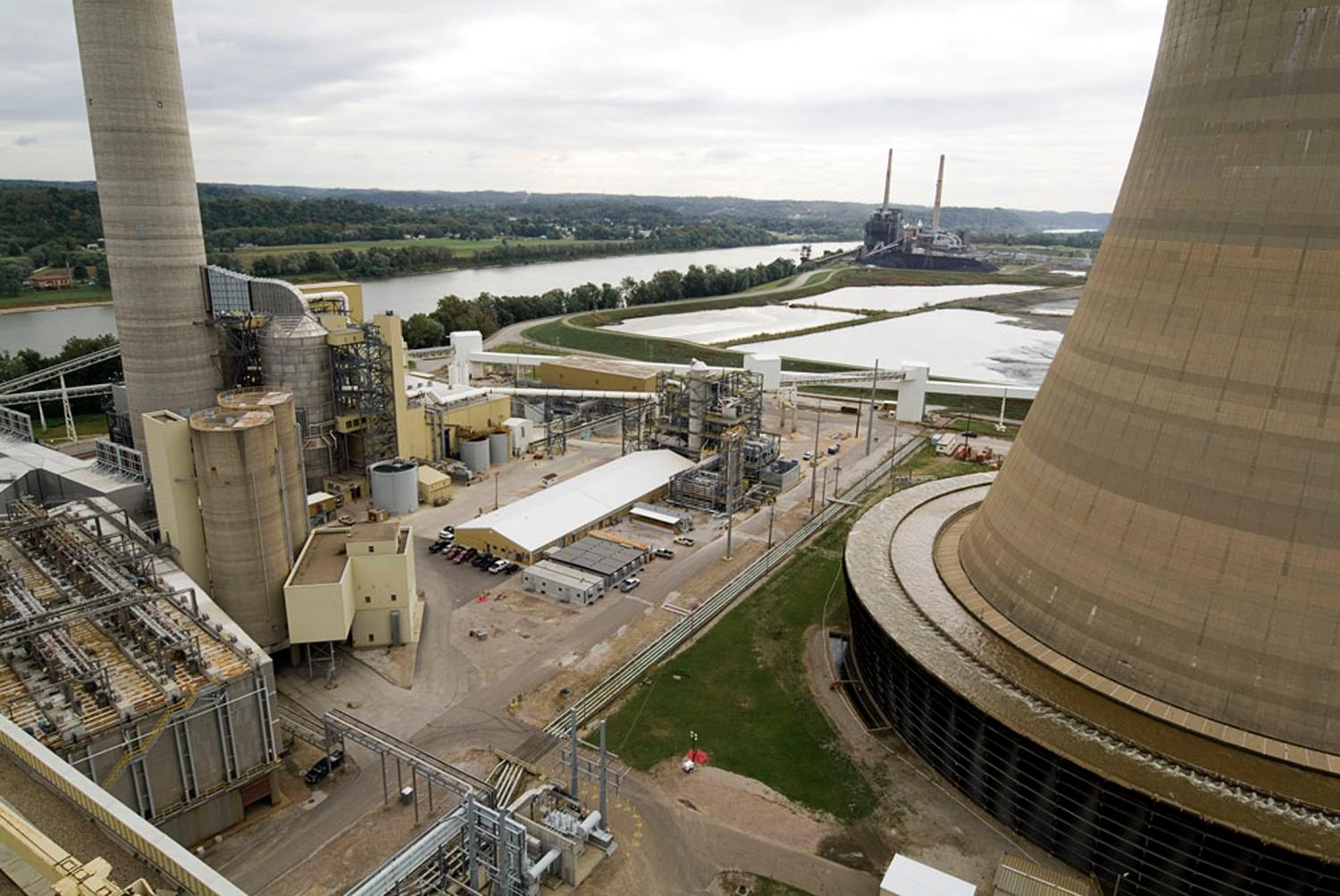 Next month, global leaders will convene in Paris for the United Nations Conference on Climate Change. Greenhouse gas (GHG) emissions reduction strategies are important to reduce and manage the risks of climate change. While the share of renewable energy in the global energy mix is expected to increase, transitioning to a low carbon economy will take time, and coal and natural gas are projected to play a prominent role in the power and industrial sectors for a number of decades. Climate mitigation technologies such as carbon capture and storage (CCS)—an integrated process of capturing CO2 from power generation or industrial activities and storing it permanently via processing or injection into suitable geological formations–can play an important role in global efforts to limit GHG emissions.
Next month, global leaders will convene in Paris for the United Nations Conference on Climate Change. Greenhouse gas (GHG) emissions reduction strategies are important to reduce and manage the risks of climate change. While the share of renewable energy in the global energy mix is expected to increase, transitioning to a low carbon economy will take time, and coal and natural gas are projected to play a prominent role in the power and industrial sectors for a number of decades. Climate mitigation technologies such as carbon capture and storage (CCS)—an integrated process of capturing CO2 from power generation or industrial activities and storing it permanently via processing or injection into suitable geological formations–can play an important role in global efforts to limit GHG emissions.
Why CCS is important
CCS is a low-carbon technology that can form part of a balanced portfolio approach to address climate change, while also offering economic and national security advantages. Today, CCS is the only technology that can achieve significant emissions reductions (90 percent capture or higher) from existing fossil fuel infrastructure. Indeed, many studies have suggested that unless CCS becomes a key part of a low carbon technology portfolio, it is increasingly likely that energy-system carbon emissions will not be reduced to levels that limit global warming to 2 degrees Celsius.
Fossil fuels will continue to feature prominently in the global energy mix
Climate change is an important global issue, and it has been well documented that continued increases in global carbon emissions are fueled predominantly by fossil fuel usage—particularly coal, and to a lesser extent, oil and natural gas. According to International Energy Agency estimates over the next several decades, coal will play a significant role in the global energy portfolio. While coal demand in OECD countries is projected to fall by 2040, in non-OECD economies such as Africa, India, China, Indonesia, Brazil, and Southeast Asia, coal usage is projected to increase by a third. Coal offers a cheap and abundant feedstock for electricity generation in many emerging markets where increasing access to electricity is a priority. It is also important to note that burning natural gas also results in substantial amounts of CO2 emissions. Given that the International Energy Agency projects the share of natural gas in the global energy mix to rise, CCS for natural gas will, over time, also become a serious political and environmental issue.
CCS can play a crucial role in addressing climate change
While many countries support renewable energy in order to shift away from reliance on fossil fuels, it is uncertain whether this approach alone will achieve sufficient emissions reductions to achieve the 2 degree Celsius target. Low-emission technologies such as CCS can play a vital role in contributing to global mitigation efforts, and research has shown that in the long run GHG emission reduction would be more expensive without CCS deployment.
Conclusions
In our policy brief, we assess the risks and barriers related to CCS at electricity plants, and the existing policy framework to support its application. Our study aims to identify the major obstacles facing CCS commercialization and offer recommendations for policies that can spur technological innovation and effect further cost reductions.
The key conclusions we reached in our analysis are as follows:
- CCS can meet environmental, economic, and national security objectives: As a carbon disposal approach that can be deployed on new or existing coal- or natural gas-fired power plants, CCS can help in global efforts to reduce CO2 emissions. Additionally, positioning the United States at the forefront of CCS technology development fosters export markets for U.S. companies, and including CCS in the global energy technology portfolio lowers the costs of transitioning to a low carbon economy. Finally, CCS bolsters national security by offering a way to take advantage of abundant fossil fuel resources while simultaneously meeting climate mitigation goals.
- Current policy does not adequately address CCS technology status and risks: While current CCS policy offers early stage financial support for research, development, and demonstration projects, additional policies are needed to spur further development of integrated projects at scale and create markets for CCS technology.
U.S. government financial incentives for CCS
Energy Policy Act of 2005 Energy Improvement and Extension Act of 2008 Loan Guarantees Tax Credits* Tax Credits • $8 bilion available
• Authorizes DOE to guarantee up to 80 percent of total project costs
• Borrowers pay “credit subsidy cost”
• Two separate solicitations held in 2008 and 2013
• No projects have received a loan guarantee• IRC §48A – $2.55 billion available for IGCC and other advanced coal projects
• Projects must capture & sequester 65 percent of CO2 emissions, and be in service within 5 years
• IRC §48B – $600 million available for gasification projects
• Projects must capture & sequester 75 percent of CO2
• Emissions, and be in service within 7 years
• Tax credit rate of 30 percent of total project cost available for §48A and §48B
• Since 2006, USG has awarded $2.3 billion in tax credits under IRC §48A and §48B• IRC §45Q provides:
• $20/metric ton of CO2 captured and sequestered
• $10/metric ton for CO2 used in oil or gas EOR and stored
• Credit available up to 75 million metric captured and stored
• As of mid-2014, 27 million metric tons have been stored as a result of 45Q
• 45Q tax credits will total $700 million in the period 2014 to 2018*Some of the original terms of the tax credits under EPACT 2005 were supplemented and revised by the Energy Improvement and Extension Act of 2008. Source: Peter Folger and Molly F. Sherlock, “Clean Coal Loan Guarantees and Tax Incentives: Issues in Brief,” Congressional Research Service, 19 August 2014. - A portfolio of “next generation” policies is required: The range of risks along the innovation spectrum involved in commercializing CCS means that a portfolio of multiple policies is required, encompassing front end (helping technology launch) and back-end (helping technology commercialize) approaches. Government action is required to both improve existing policy tools as well as implement new mechanisms that would foster a market for CCS technology, such as policies that would require emissions reductions or directly establish a carbon price. A “next generation” policy portfolio would also need to reflect evolving political realities while also offering a longstanding solution that can hold up amidst political cycles and leadership changes.
- This policy approach requires government financial support: Though increased financial support certainly poses a political challenge, it is vital to continue to lower the costs of existing technologies, as well as to find and demonstrate new and cheaper technologies.
- Off-ramps for technologies in research and development pipeline should be considered: Creating a process for deciding if and when to drop research and development for certain technologies if they do not show promise has found increasing support. This approach would require that an agreed process—and likely a supporting institutional structure—be established to govern how decisions to drop certain technologies would be made.
- Enhanced oil recovery (EOR) is a transitional stepping stone for CCS commercialization: The major promise and potential of CCS is deployment for mitigating climate change, which would mean widespread deployment on power plants and long-term geological storage of billions of tons of CO2 per year. As this would be well beyond the EOR market, selling CO2 for EOR should be treated as only a transitional step in CCS commercialization.
Recommendations
Development of CCS as a low carbon technology requires a “next generation” policy framework that recognizes the multitude of risks and political challenges along with the policy mechanisms needed to address them. In our study, we highlight specific mechanisms that we believe should form the basis of a thoughtful discussion on what is required to support commercialization of CCS:
- Addressing technology risk: A dedicated CCS trust fund supported by a wires or public good surcharge could support R&D and large-scale demonstrations along with other policy incentives and mechanisms. A process and structure for program oversight and management that is targeted specifically to CCS should be created.
- Addressing financial risk through the revision of existing policy as well as implementation of new policy tools: High capital and operating costs present significant barriers for CCS projects. Access to financing could be improved by modifications to the government loan guarantee program and modifications to tax credits. Additionally, new polices should be implemented that would allow CCS projects to be eligible for master limited partnerships and private activity bonds, as well as financial support for front-end engineering and design work.
- Addressing climate policy uncertainty through creating markets for CCS technology: A federal carbon policy that requires CO2 reductions or a sufficiently high price on CO2 is needed in order to create a market for CCS technology. Additionally, an electricity price stabilization framework would help offset operating costs in markets that are not subject to CO2 reduction requirements or climate change policy.
CCS power generation projects operational by 2020 (Global CCS Institute)
| Project name | Project lifecycle stage | Country | CO2 capture capacity (Mt/yr) | Operation date | Capture type |
|---|---|---|---|---|---|
| Boundary Dam Integrated Carbon Capture & Sequestration Demonstration Project | Operate | Canada | 1.0 | 2014 | Post-combustion capture |
| Kemper County Energy Facility | Execute | United States | 3.0 | 2016 | Pre-combustion capture (gasification) |
| Petra Nova Carbon Capture Project | Execute | United States | 1.4 | 2016 | Post-combustion capture |
| Don Valley Power Project | Define | United Kingdom | 1.5 | 2020 | Pre-combustion capture (gasification) |
| Hydrogen Energy California Project (HECA) | Define | United States | 2.7 | 2019 | Pre-combustion capture (gasification) |
| Rotterdam Opslag en Afvang Demonstratieproject (ROAD) | Define | Netherlands | 1.1 | 2019-2020 | Post-combustion capture |
| Sinopec Shengli Power Plant CCS Project | Define | China | 1.0 | 2018 | Post-combustion capture |
| Texas Clean Energy Project | Define | United States | 2.4 | 2019 | Pre-combustion capture (gasification) |
| White Rose CCS Project | Define | United Kingdom | 2.0 | 2020-2021 | Oxy-fuel combustion capture |
| Peterhead CCS Project | Define | United Kingdom | 1.0 | 2019-2020 | Post-combustion capture |
| Sargas Texas Point Comfort Project | Define | United Kingdom | 0.8 | 2017 | Post-combustion capture |
| Source: “Large-Scale CCS Projects,” Global CCS Institute, 17 September 2015, http://www.globalccsinstitute.com/projects/large-scale-ccs-projects#map. Additionally the projects lifecycle, as defined by the Global CCS Institute, are categorized under various stages. “Operate” projects are defined as being able to operate the asset within regulatory requirements and the asset is currently operational. “Execute” projects have had their final investment decision confirmed and construction has begun. “Define” is described as just prior to undertaking a final investment decision and being able to demonstrate technical and economic viability of the project. For further details on definitions refer to, “Large-Scale CCS Projects—Definitions,” Global CCS Institute, http://www.globalccsinstitute.com/projects/large-scale-ccs-projects-definitions. | |||||




